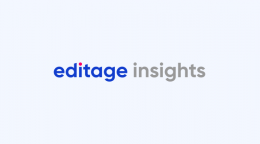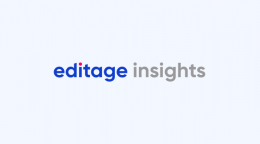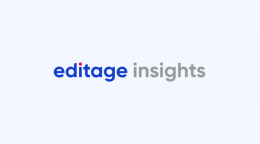The impact of the European Accessibility Act on scholarly publishers

Did you know that 1.3 billion people worldwide—16% of the global population—live with significant disabilities? These numbers are a powerful reminder of the vast scale of individuals who may face inequities and barriers to accessing products and services. Addressing these challenges is at the heart of initiatives like the European Accessibility Act (EAA), which emerges as a powerful call to action, challenging industries to rethink inclusivity and build a future where accessibility is not an afterthought but a standard.
The EAA, set to take effect in June 2025, marks a significant turning point in accessibility regulations across the European Union. It establishes a framework requiring products and services—including digital content—sold within the European Union to meet standardized accessibility criteria. For scholarly publishers, these new mandates introduce both challenges and opportunities to make research content more inclusive— this involves adapting innovative digital publications standards, improving website navigability, and ensuring compatibility with assistive technologies. Here are some key things to note about the EAA:
The EAA spans a wide range of services and products, but for scholarly publishing, it relates to consumer services like electronic messaging and communication services, services that provide access to audiovisual content, and services related to e-books and e-commerce.
Exemption is extended to microenterprises that have fewer than 10 employees and with a turnover of less than €2 million a year. Furthermore, if compliance requires significant changes to a product or service, or would impose a disproportionate economic burden, then the EAA may not apply.
Frontlist titles or newer digital content and services must meet accessibility standards by June 2025.
Backlist titles or older titles have a five-year exemption and must comply by June 2030.
The EEA applies to publishers selling titles within the European market or directly to clients or customers in the European Union, no matter the geographical location of the publishers.
Each member state within the European Union will be responsible for enforcing the EAA regulations through market surveillance.
How does the EAA impact academic publishers?
While the EAA primarily impacts books, scholarly journals may also need to adapt to meet the new standards, and ensure their online content and services are accessible to all, including individuals with disabilities.
This would require collaboration among all stakeholders in the supply chain—from those who create the content and those responsible for distribution to implement the necessary changes. Publishers may need to conduct a thorough accessibility audit of their existing content and processes to pinpoint any gaps. Addressing these gaps may require investments in relevant technologies and forming partnerships with accessibility consultants or organizations. Incorporating accessibility best practices from the outset in new content creation and platform updates will be key. Additionally, training staff to be familiar with accessibility requirements and best practices is also crucial. Finally, ongoing monitoring and user feedback are essential to ensure compliance and make continuous improvements in accessibility efforts.
What does complying with EAA look like for publishers?
In order to adhere to the EAA, publishers must prioritize the accessibility of all digital content, including websites, applications, and e-books, ensuring that it is usable by everyone, particularly individuals with disabilities. This entails implementing crucial modifications to their online platforms and embracing a variety of best practices and technologies that align with accessibility standards.
Accessible digital content: All e-books, journal websites, and online content must comply with the Web Content Accessibility Guidelines (WCAG), ensuring usability for people with disabilities, such as those relying on screen readers or keyboard navigation. Additional considerations include offering alternative text for images, ensuring videos are captioned, and designing websites to be easily navigable using screen readers.
Accessible publishing tools: To ensure equal access for authors, reviewers, and editors with disabilities, it is essential that submission platforms, peer-review systems, and other publishing tools adhere to accessibility standards.
Adaptations to formats: Publishers must offer alternate content formats, such as EPUB, that allow for customization—such as adjusting text size, altering color contrast, and reflowing text for various screen dimensions—while conforming to accessibility standards like WCAG.
Detailed metadata: E-books must be easily discoverable, and publishers should provide metadata detailing their accessibility features.
Customer service accessibility: Clear communication channels, such as live chat or email, must be designed to accommodate users with disabilities.
Publishers are already ramping up their efforts to comply with the standards set forth by the act. For instance, SPIE is upgrading eBook formats with tools like WAVE and NVDA. Similarly, Tech Science Press (TSP) is working to provide articles in accessible formats such as HTML, PDF, and EPUB, while also including alt text, proper headings, and options for large print and Braille. TSP is also focused on making datasets accessible and ensuring their website and submission system comply with WCAG standards.
What are the key benefits of compliance with EAA?
Compliance with the EAA offers a multitude of key advantages that can not only greatly enhance both societal engagement and inclusion, but also business opportunities.
Broader audience base: By making websites, digital publications, and other media more user-friendly for everyone, including this often-overlooked demographic, publishers can broaden their reach and connect with a wider audience.
Improved brand reputation: Demonstrating a genuine commitment to inclusivity, social responsibility, and equal access for all can enhance publishers' reputations and aligns with global equity, diversity, and inclusion goals. This proactive approach may also lead to improved customer loyalty, as audiences are more likely to support brands that support diversity and equal opportunities.
Competitive advantage: Embracing these accessibility standards, publishers can differentiate themselves in a competitive market, resonate with a broader audience and attract institutional partners and funding organizations prioritizing accessibility compliance.
Better user experience: By removing barriers to accessibility publishers can improve overall website usability and navigation, creating more seamless interaction for every user.
Avoiding legal and regulatory risks: By adhering to EAA publishers can steer clear of fines and legal disputes that stem from non-compliance, protecting their financial health and operational integrity.
What are some of the challenges in ensuring compliance?
As scholarly publishers take significant steps to meet the requirements outlined in the EAA, they may encounter several challenges associated with creating fully accessible digital ecosystems.
Technical implementation: Updating websites, tools, and content management systems to meet the latest WCAG standards may require significant investment in both technology and expertise. Furthermore, publishers need to incorporate comprehensive metadata that outline accessibility features.
Legacy content: Since EAA policies also apply to already published materials, publishers with extensive archives may face significant labor and financial challenges in complying with these requirements. Moreover, scientific publications often include nuanced and complex images, and other content like equations, for which creating precise and informative alt text descriptions can be challenging.
Workforce training and resource allocation: Accessibility training is important for staff across editorial, design, and technical teams. Regular accessibility audits and monitoring will also be an important aspect integrated into workflows, which can be resource-intensive, particularly for smaller publishers. Creating born accessible content can also impact publication timelines. Moreover, the process involves collaboration across stakeholders in the supply chain, including external vendors.
Vendor compliance: Publishers relying on third-party platforms or services must ensure these providers adhere to the EAA requirements.
Financial Implications: The significant expenses and upkeep associated with adhering to EAA standards require considerable investment in cutting-edge technologies, regular updates to digital content, and diligent monitoring to stay aligned with ever-changing accessibility regulations.
Conclusion
The EAA reflects a growing global trend toward inclusivity in publishing. While compliance may initially feel like a regulatory burden, it ultimately represents an opportunity for scholarly publishers to lead the way in democratizing knowledge and fostering an equitable research ecosystem. By prioritizing accessibility, publishers can not only secure the future of their operations but also promote wider participation in research, driving inclusivity and innovation within the academic publishing landscape.
Comments
You're looking to give wings to your academic career and publication journey. We like that!
Why don't we give you complete access! Create a free account and get unlimited access to all resources & a vibrant researcher community.














